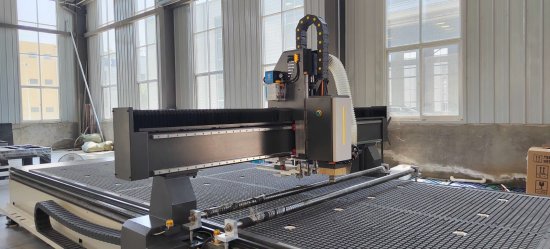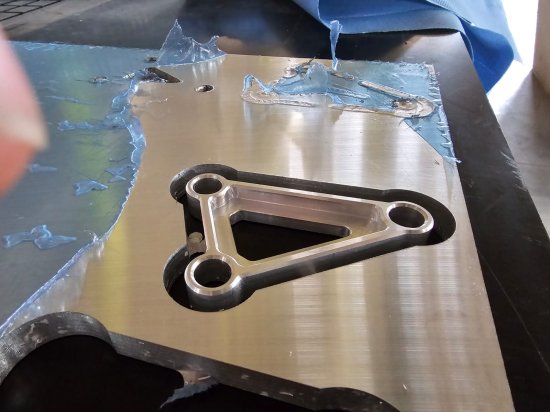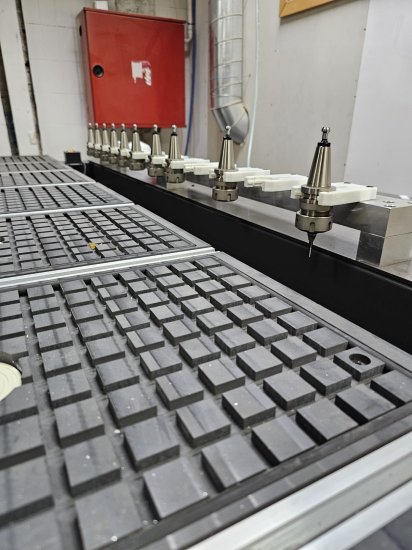Aluminum milling
We develop and manufacture CNC machines for machining aluminum and all its alloys. We adapt all these machines to the customer's application. Based on our experience, we will be happy to recommend suitable equipment for a CNC milling machine for aluminum. Just send a non-binding inquiry.
I am interested in aluminum machining machine



Aluminum is a light metal with excellent properties that is used in many industries due to its light weight, high corrosion resistance and good thermal conductivity. There are various machining techniques for its effective processing and shaping. In this article, we will cover several key aluminum machining methods and their applications.
- Milling is one of the most common techniques used for aluminum. Milling is the process of removing material from the surface of an aluminum sheet or block using a rotating tool called a cutter. This method makes it possible to create complex shapes and detailed surface treatments. Aluminum parts milled in this way are often used in the aerospace, automotive and electronic equipment manufacturing industries.
- Turning Machining is a technique in which the aluminum material is rotated and a special tool, called a lathe, removes the material from the work piece. This process is often used to create cylindrical or conical parts such as aluminum tubes, screws and other components. Aluminum turned parts can be found in many machines and devices.
- Push Machining, sometimes called extrusion, is a process in which aluminum material is pushed through an opening in a die, resulting in a specific shape. This technique is often used for the production of aluminum tubes, profiles and moldings. Extruded aluminum profiles are found in many applications, including construction, furniture and the automotive industry.
- Press Machining is a process where an aluminum sheet is placed between two molds and pressure is formed into the desired shape. This method is often used for the production of aluminum packaging, sheet metal parts and other thin structures. The advantage of stamping is the speed and precision with which repetitive shapes can be created.
- Welding Machining Welding is the process of joining aluminum parts by melting the material. This technique is used to create strong connections between aluminum parts. Welding aluminum requires special skills and techniques because aluminum has a high thermal conductivity and is prone to deformation during welding. Aluminum welded structures are often found in the aerospace, shipbuilding and construction industries.
Each of these aluminum machining techniques has its own advantages and limitations and is suitable for different applications. Choosing the right processing method depends on the desired shape, size and properties of the aluminum part.
The most common application of aluminum milling
Aluminum machining is a key element in many industries that take advantage of this lightweight metal. Thanks to different machining techniques, it is possible to create a wide range of products, from small parts in electronics to large structures in the aerospace and construction industries. With the continuous development of technology and materials, future machining methods for aluminum are expected to become even more efficient and precise, strengthening its position as a key material in the industrial world.
Aluminum milling is a process that requires special machines with certain characteristics and capabilities to achieve optimal results. Here are some key factors and the types of machines that are generally considered best for aluminum milling:
- Vertical milling machines: Vertical milling machines are usually better suited for milling aluminum than horizontal machines. These machines have a vertical spindle axis, which facilitates chip removal and cooling, which are key factors in aluminum milling. Vertical machines also often offer more stability and strength when working with this metal.
- CNC (Computer Numerical Control) milling machines: CNC machines are equipped with computer control, which allows for high precision and repeatability when milling aluminum. With programmable features, you can easily create complex shapes and detailed finishes.
- Spindle speed and power: When milling aluminum, high spindle speed and power are important in order to remove material quickly and efficiently. Machines with sufficient spindle speed allow for a smoother surface and reduced tool wear.
- Cooling and Lubrication: Aluminum tends to cause temperature problems during milling, so it is important to have a cooling and lubrication system that keeps the tools and aluminum material at optimal working temperatures. This includes the use of coolants and lubricants to help reduce friction and dissipate heat.
- Quality tools: The use of high quality milling tools is essential for efficient aluminum milling. These tools should be designed to withstand wear and tear and work with aluminum without problems.
- Stable workbench: The stability of the workbench or holder is crucial for accurate milling. The table should be sturdy and durable enough to hold the aluminum part firmly in place during the process.
Choosing the right milling machine for aluminum processing depends on the specific needs, size and complexity of the project.